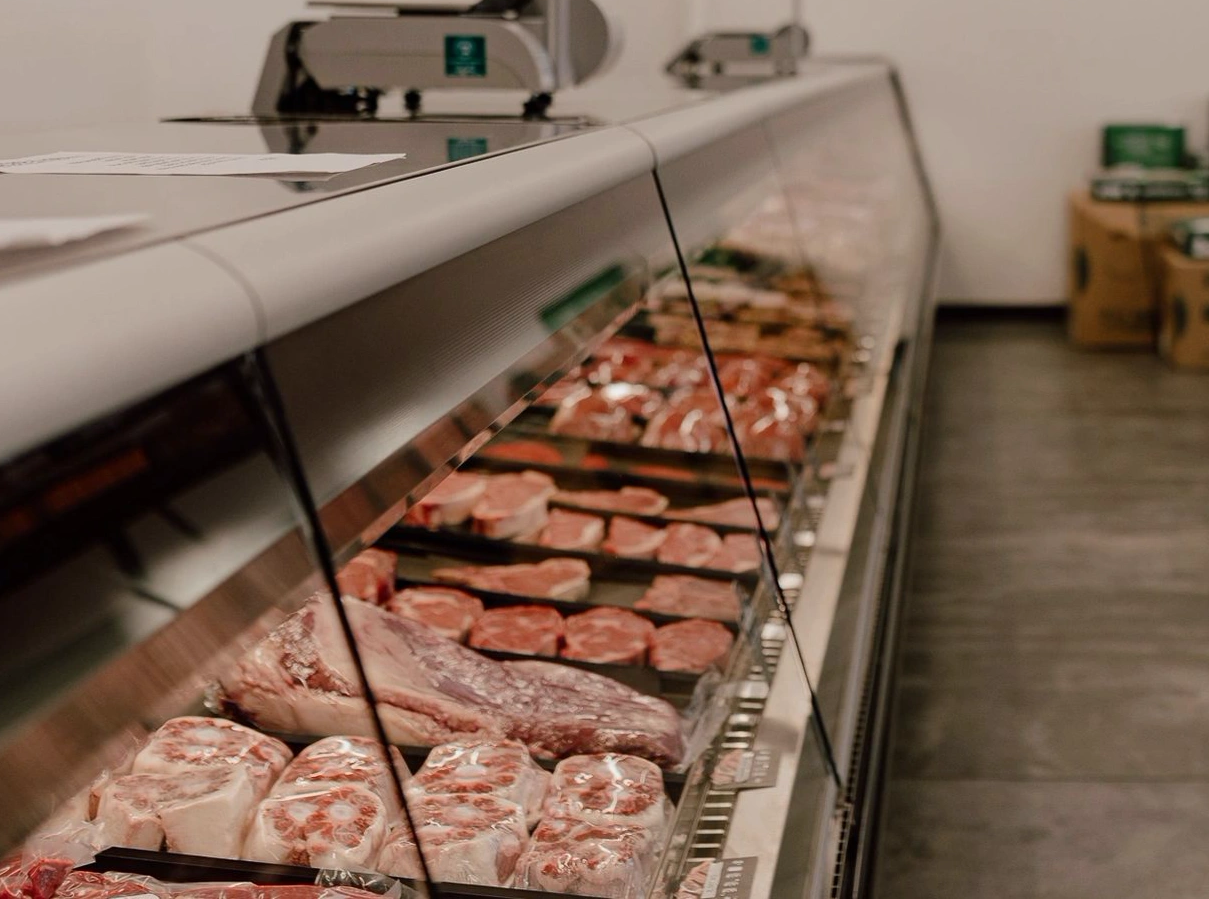Discover Fresh Cuts at Bagley Farms Meat Market Edwardsville IL for Your Following BBQ
Discover Fresh Cuts at Bagley Farms Meat Market Edwardsville IL for Your Following BBQ
Blog Article
Discover the Art of the Butcher's Cut in a Modern Meat Market
In the ever-evolving landscape of contemporary meat markets, the butcher's cut has transcended its traditional origins, combining old-time craftsmanship with modern practices. What absolutely sets the contemporary butcher apart is their ability to build a deeper link between consumers and the origins of their meat.
Advancement of Butchery Methods

The mid-20th century saw butchery methods further fine-tuned by scientific understandings right into muscle mass biology and meat aging, enhancing both tenderness and preference. Developments like vacuum product packaging and refrigeration prolonged item shelf-life, enabling butchers to diversify offerings and improve high quality control. This period also noted the surge of specific equipment, such as band saws and meat slicers, which increased accuracy and effectiveness in meat processing.
Computerized systems currently aid in monitoring animal provenance and maximizing cuts to satisfy details client preferences. In addition, a rebirth in artisanal butchery has arised, mixing standard skills with modern expertise to provide to customers looking for ethical and lasting meat alternatives.

Comprehending Meat Cuts

Understanding the complexities of meat cuts is important for both butchers and consumers seeking high quality and value. Each cut comes from a different component of the animal, presenting unique flavors, textures, and cooking techniques. Proficiency of these differences not only enhances cooking experiences yet also takes full advantage of the utility of each carcass. For butchers, precise cuts mirror skill and respect for the craft, ensuring very little waste and optimum yield.
The key categories of meat cuts consist of primal, sub-primal, and retail cuts. Butchers after that damage these down better right into sub-primal cuts, before lastly creating retail cuts offered to consumers, like ribeye or tenderloin.
Comprehending muscle structure is essential; muscle mass made use of more frequently by the animal often tend to be harder and are best fit for slow food preparation techniques, while less-used muscles, like those discovered in the loin, are extra tender and perfect for barbecuing or roasting. Knowledge with these distinctions empowers consumers to make informed options, enhancing their culinary endeavors.
Picking High Quality Meat
Choosing the ideal meat entails greater than just choosing a visually attractive piece from the display screen. The art of selecting quality meat needs a discerning eye and understanding of specific qualities that indicate freshness and quality. Firstly, take note of the color; beef ought to have a brilliant, cherry-red hue, while lamb ought to show a soft pink tone, and pork a light pink. This indicates the meat is fresh and hasn't been subjected to oxygen for too lengthy.
Second of all, consider the marbling, which refers to the white streaks of fat within the muscle mass. Correct marbling is a crucial sign of tenderness and flavor, as it thaws during food preparation, boosting the meat's juiciness. Bear in mind, higher marbling typically correlates with exceptional quality cuts, such as USDA Prime.
Structure is another important element; meat must feel strong to the touch, not slimed or excessively soft. Furthermore, be conscious of the aroma. Fresh meat ought see post to have a tidy, neutral scent, free from any type of sour or repulsive odors.
Matching Cuts With Cooking Techniques
Efficiently pairing cuts of meat with the ideal cooking techniques is important for accomplishing ideal taste and structure. These approaches boost the meat's all-natural tastes and guarantee a juicy surface.
On the other hand, harder cuts like brisket and chuck roast are rich in collagen, which damages down into gelatin when cooked gradually. These cuts are excellent for braising or sluggish roasting, permitting the meat to soften with time and establish deep, complex flavors. Cuts such as brief ribs and pork shoulder make out well with slow-cooking methods, where extended over at this website cooking times change their robust appearances into delicious meals.
Lamb shanks and oxtail, which need extended cooking to tenderize, are excellent prospects for stewing or slow-moving simmering. These methods coax out abundant, passionate tastes while maintaining moisture. By comprehending the special characteristics of each cut, chefs and home chefs alike can boost their cooking developments, ensuring each meal is both satisfying and memorable.
The Butcher's Function Today
Browsing the developing landscape of the contemporary meat market, the butcher's role today extends beyond simple preparation of cuts. Contemporary butchers are cooking artisans, instructors, and advocates for sustainable methods. They link the space between the farm and the fork by making sure moral sourcing, understanding animal husbandry, and focusing on openness in the supply chain. This shift mirrors the expanding customer need for high quality over quantity, where provenance and pet well-being are vital.
In enhancement to crafting exact cuts, butchers currently involve directly with clients, providing cooking guidance and tailoring choices to suit private requirements and preferences. Their expertise in meat aging, marbling, and flavor profiles empowers consumers to make enlightened decisions, enhancing their culinary experiences. This individualized service her response exhibits the butcher's advancing function as a trusted expert in the cooking area.
In addition, butchers are essential in reducing waste, making use of whole pets to produce varied products such as sausages and supplies - bagley farms meat market edwardsville il. This comprehensive approach not just respects the pet however additionally lines up with contemporary sustainability objectives. This way, the contemporary butcher personifies both custom and development, adjusting to an ever-changing market while maintaining the virtuosity and stability of their craft

Verdict
Proficiency in understanding diverse meat cuts and high quality indications encourages butchers to offer educated referrals, straightening certain cuts with optimal cooking techniques. By recognizing historical techniques while welcoming modern needs, the butcher's duty remains important in today's sophisticated meat market.
Report this page